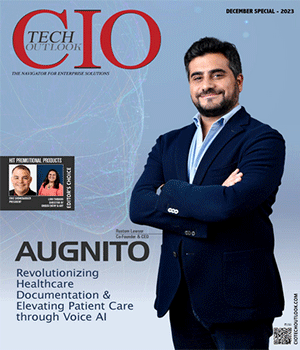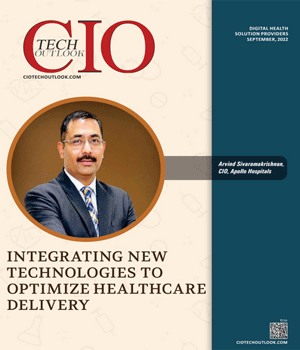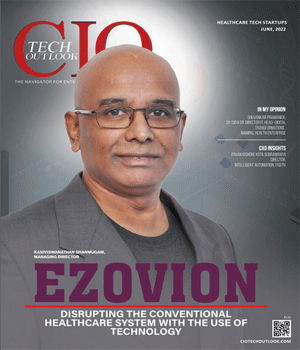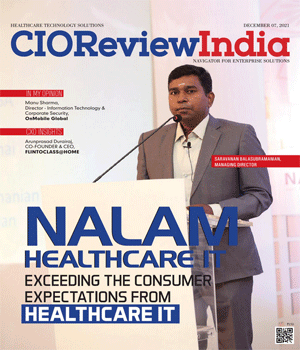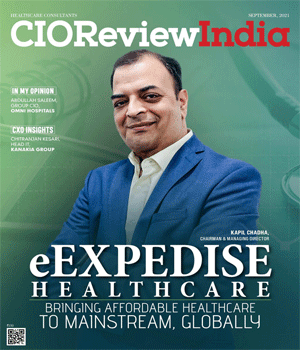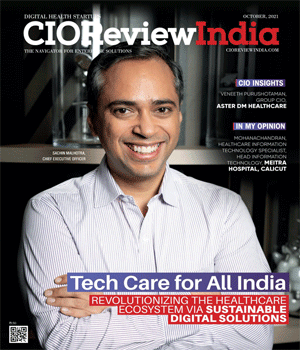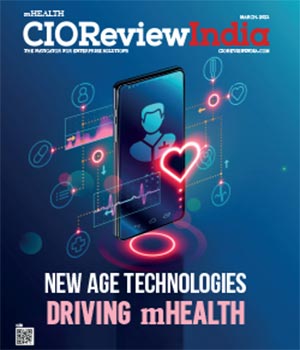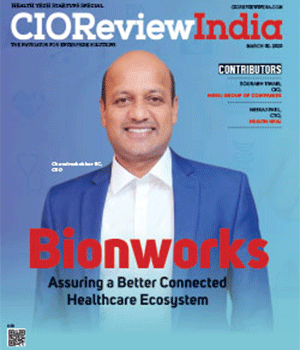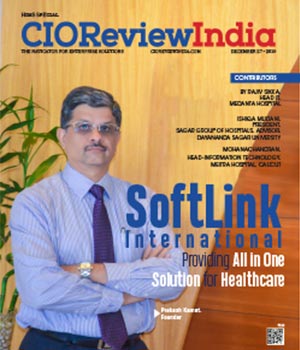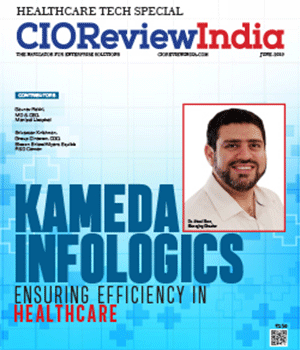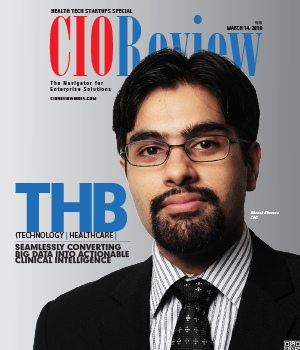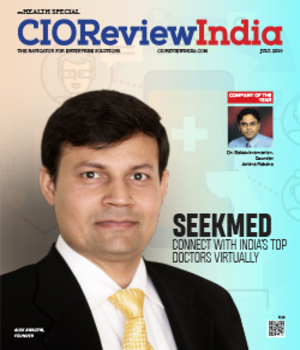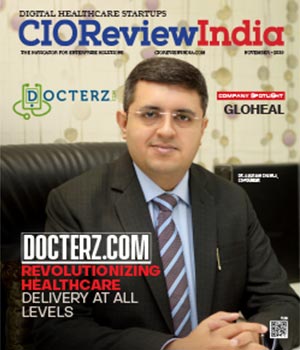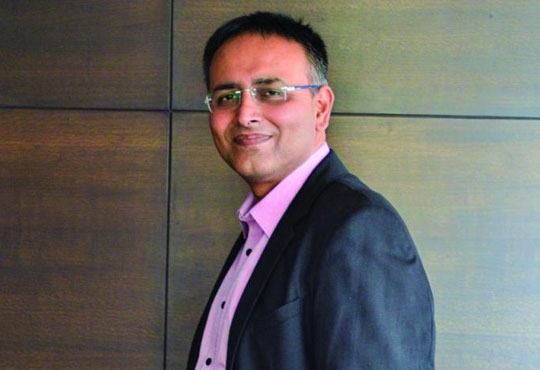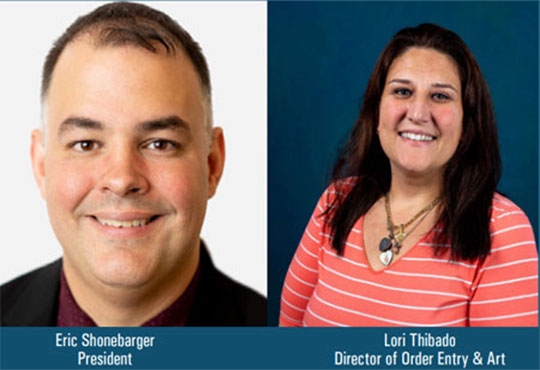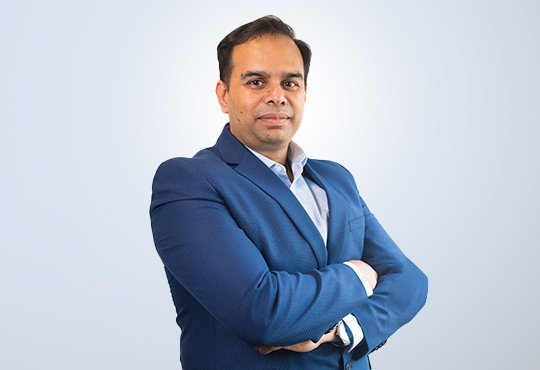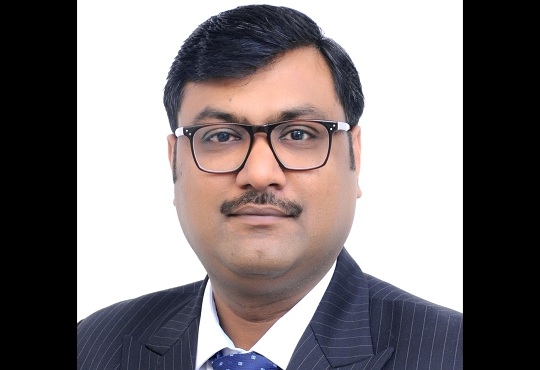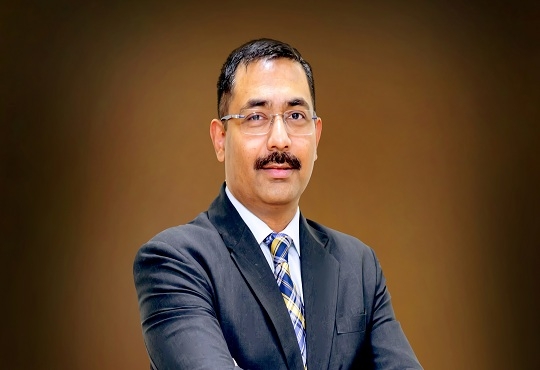
Quantum Shift in Healthcare Driven by Technology Adoption
Abhrasnata Das | Friday, 10 June 2022, 14:05 IST
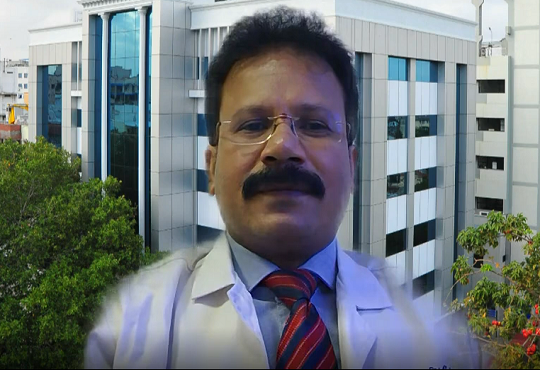
Dr. R.R.Sudhir, Head Dept of Preventive Ophthalmology at Sankara Nethralaya in an interaction with CIO Tech Outlook, shares his insights on the key factors of Interoperability, Unstructured Data Management, IT Infrastructure Development, and More.
The global healthcare informa- tion technology (IT) market is projected to reach $880,688.75 million by 2030. How do you see this industry developing in India?
As a hospital focused on leveraging technology for advancing health care for our patients, we can see the health-tech market growing in telemedicine, e-pharmacy, Opticals, wellness, healthcare IT, analytics, home healthcare.
The pandemic and adoption of technology in healthcare has brought a quantum shift in the sector and has resulted in fast tracking of technology into the mainstream of every provider’s business operations and now getting more strategic.
The Internet of Things in conjunction with telemedicine has created a new Internet of Medical Things (IoMT), which has come to play a critical role in monitoring and preventing illnesses. AI-driven analytics, tools and machines can help healthcare providers find the right approach for each patient with more efficient, precise and impactful intervention. Applications of nanotechnologies in disease diagnosis, drug delivery targeted at specific sites in the body and molecular imaging are being investigated. All of these technologies will be mainstream in the coming years and it presupposes that the providers will have robust Electronic health records which is gaining ground in the Indian health scene.
Today, there is an increasing need for each segment to work closely in tandem with another and seamlessly transfer full datasets to ensure better healthcare delivery. However, numerous challenges like excessive data volumes, incompatibilities of standards, etc are impeding the possibility of interoperability. How did you approach this problem? How can a seamless interoperability be actualized?
Healthcare is an inherently fragmented industry, whether between departments at a single hospital or between the broader patient stakeholders. Along a single patient’s journey, dozens of departments, specialists and stakeholders will be involved from physicians and specialists to manufacturers and pharmacists.
The siloed nature of healthcare prevents physicians, pharmaceutical companies, manufacturers and payers from accessing and interpreting important data sets, instead, encouraging each group to make decisions based upon a part of the information rather than the whole. As a result, this forces each patient to take control of their healthcare treatment, and lead the process of updating each new doctor on their situation, who they’ve visited and what they’ve been treated with.
For healthcare to make progress and step beyond the silos, it will need to take real-time communication and make it convenient and valuable for all key stakeholders. Traditional electronic health records (EHRs) have proven ineffective and rely on physicians to spend the requisite time to update patient data. Sankara Nethralaya had been a pioneer in developing and implementing best in class Ophthalmic EMR. The software is the backbone of the entire operations across all our locations including our Eye Camps. This has enabled Sankara Nethralaya to service the mounting needs of its patients and coupled with our Tele medicine capabilities we could serve our patients even during extremes like Pandemic with the same care that we provide in our hospital premises.
On the patient’s end, data silos can make a doctor’s appointment feel clunky, disorganized, and inefficient. By implementing connected systems, we are able to streamline the appointment itself as well as the entire patient process: from the time a patient schedules a new appointment to the post-visit follow-up. At the time a patient books an appointment, they can easily input their health data simultaneously so they don’t need to fill it out in the doctor’s office or verbally share it with the medical staff, cutting into valuable face-to-face time with the doctor. Our Telemedicine solutions are fully integrated into our EMR and have enabled clinicians to provide the best possible advice under challenging circumstances without compromising on data quality.
The heterogeneity, diversity of sources, quality of data and various representations of unstructured data in healthcare increases the number of challenges as compared to structured data. How should unstructured data of the healthcare industry be managed? How do you tackle the challenges pertaining to unstructured data?
Healthcare is an industry in transition and the pandemic has really fast tracked the transition into more modern methods of data capture and augmentation to help clinicians to make better and more informed decisions. With the healthcare industry shifting towards value-based care with more focus on the patient, immersive experiences have increased patient data several-fold and posed significant challenges to the health care data management. The rate at which healthcare data is generated at various touch points is growing exponentially making a crying need to relook at data management needs in healthcare.
As the industry takes a data-centric approach to offering services, there is also a growing need for human AI collaboration. Although Artificial Intelligence and Machine Learning are leading the way in several critical areas of healthcare, human intervention is critical for building trust and continued success. It is important to evolve a patient centric data model that will provide Data-centric approaches with a focus on knowledge discovery, a Human AI collaboration that redefines the future of work through NLP and Building trust with patients through informed consent.
As technology advances help in improving quality, reduce costs and enhance access it is equally important to provide Improved security against data breaches, legal compliance. The benefits of more automation and AI also must lead to the growth of Explainable AI. The enhanced industry partnership with innovators, technology providers and disruptors could significantly add value to stakeholders in solving the challenges of Data management and with more shared public data sets, shared environments for better collaboration benefitting the entire community for a more equitable and sustainable and value based care.
Cyberattacks against health systems occur with alarming frequency. According to IT security firm Sophos, 34% of healthcare organizations were hit by ransomware in 2020. How can robust cybersecurity infrastructure be attained?
The healthcare sector has all the cybersecurity challenges facing any business, plus unique challenges all their own. They must protect their networks, databases, and endpoints from attack. They are responsible for protecting private financial and medical information about their patients and employees. They often protect valuable intellectual property. Additionally, they have challenges few other businesses encounter. The number of connected medical devices has exploded over the last ten years. Nearly every conceivable piece of medical equipment is now web-enabled or connected to the organization’s operational network.
All of these devices communicate across the hospital network providing doctors with valuable patient information entered into electronic health records. The transmitted data allows doctors to provide more affordable care. Clinicians can work faster and in safer conditions. And each of those devices acts as an entry point for cybercriminals to exploit.
However, modern workplace enablement starts with zero. We believe in people who thrive, protect data no matter how it’s accessed, and propel business forward. Our cyber defense strategies hover around the Zero Trust as a strategic approach to cybersecurity thereby securing the organization’s interest by eliminating implicit trust and continuously validating every stage of a digital interaction.
Even as Health IT rediscovers itself to provide a sustainable and trusted IT infra for growth and resilience, it is important to evolve policies, practices and frameworks which recognizes Patient as the center point of interaction and balances the need between Privacy and Information security. The budgetary allocations must include creating user awareness, ethical hacking and embracing tools, technologies and best practices which can protect the patient information in a proactive manner.
Moving ahead, How do you see the healthcare industry evolving in terms of new technology adoption?
The disruptive technologies like AI / ML / Deep learning , Hyper automation are bound to become mainstream. The convergence of Voice / Data / Videos & Medical imaging complement the demands of these technologies in a very fundamental way. Innovative approaches to patient outcomes and patient experience are leading to more autonomous and semi autonomous work processes making time intensive work more seamless leading to significant benefits for all stakeholders improving cost, enhancing quality and driving more efficiency.
We see every patient and health care worker potentially using a personal bot / Digital assistant assisting in their daily health routines. More intelligent and connected systems could pro actively alert patients and providers for early intervention resulting in saving time & costs and with focus on better compliance could lead to healthier lifestyles over time.
Advancements in 5G networks could lead to transformation of Telemedicine capabilities with near human-like experiences. The AR / VR – Metaverse capabilities could potentially enable more user experience never before seen from real time imagery of our bodies in non commercial and home settings as more technologies become mainstream.
Consumerization of health could significantly yield more awareness and proactive care and democratization of data and information with more ownership of data to the patients could drive better and informed decisions for all the stakeholders progressively, thereby making healthcare more equitable to all and the same technology and services will be available making affordable universal care a reality.
CIO Viewpoint
Integrating New Technologies to Optimize...
By Abhrasnata Das
Quantum Shift in Healthcare Driven by...
By Abhrasnata Das
Product Adoption: Realizing The Real Value
By Ashish Pandey, CIO, GSK Consumer Healthcare India
CXO Insights
HIT Promotional Products: Fostering Empowerment...
By Eric Shonebarger, President & Lori Thibado, Director of Order Entry & Art
Addressing the Data Management Challenges in...
By Richa Singh
Elevating Patient Experience with Remote...


